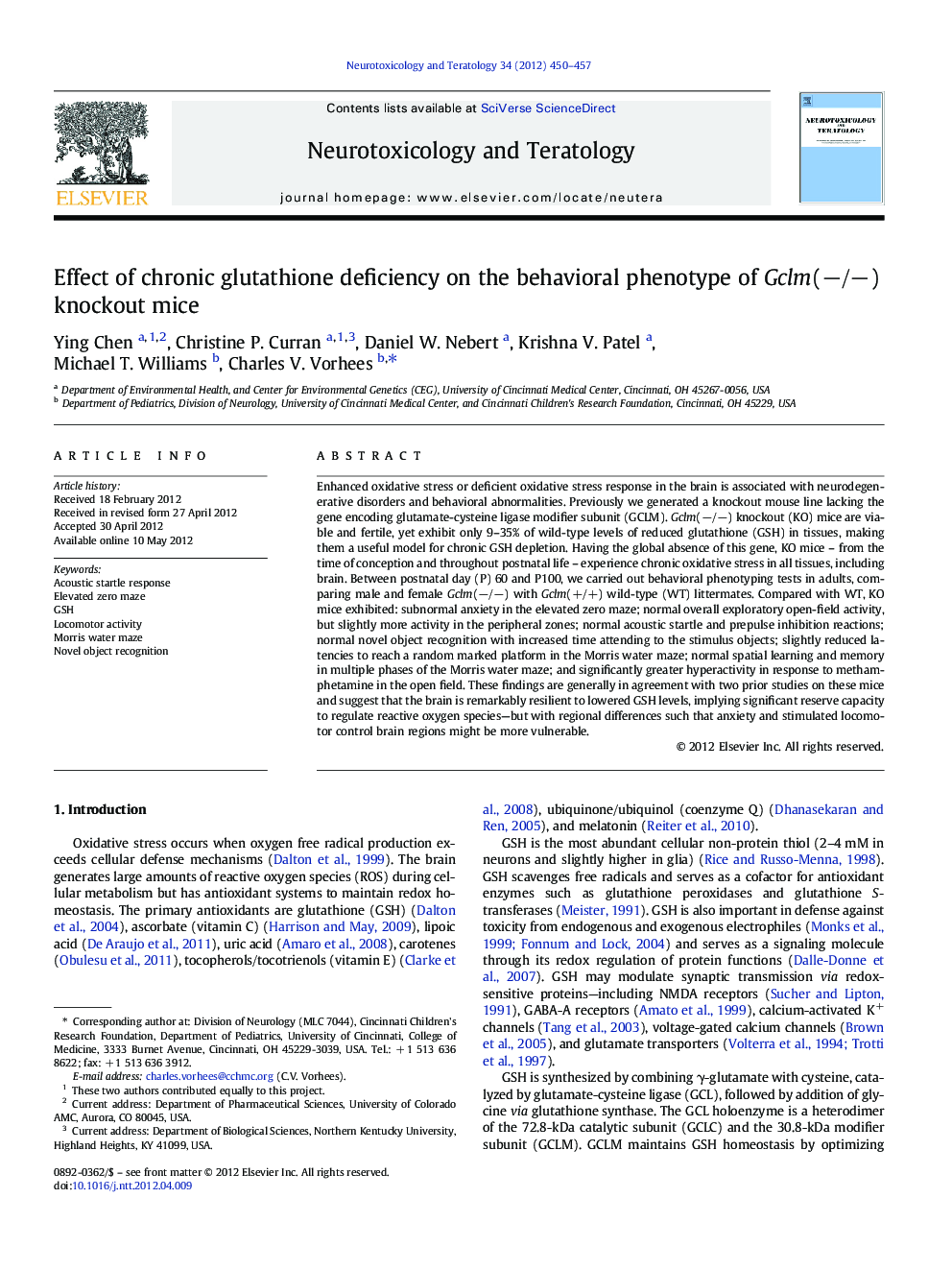| کد مقاله | کد نشریه | سال انتشار | مقاله انگلیسی | نسخه تمام متن |
|---|---|---|---|---|
| 2591521 | 1131813 | 2012 | 8 صفحه PDF | دانلود رایگان |

Enhanced oxidative stress or deficient oxidative stress response in the brain is associated with neurodegenerative disorders and behavioral abnormalities. Previously we generated a knockout mouse line lacking the gene encoding glutamate-cysteine ligase modifier subunit (GCLM). Gclm(−/−) knockout (KO) mice are viable and fertile, yet exhibit only 9–35% of wild-type levels of reduced glutathione (GSH) in tissues, making them a useful model for chronic GSH depletion. Having the global absence of this gene, KO mice – from the time of conception and throughout postnatal life – experience chronic oxidative stress in all tissues, including brain. Between postnatal day (P) 60 and P100, we carried out behavioral phenotyping tests in adults, comparing male and female Gclm(−/−) with Gclm(+/+) wild-type (WT) littermates. Compared with WT, KO mice exhibited: subnormal anxiety in the elevated zero maze; normal overall exploratory open-field activity, but slightly more activity in the peripheral zones; normal acoustic startle and prepulse inhibition reactions; normal novel object recognition with increased time attending to the stimulus objects; slightly reduced latencies to reach a random marked platform in the Morris water maze; normal spatial learning and memory in multiple phases of the Morris water maze; and significantly greater hyperactivity in response to methamphetamine in the open field. These findings are generally in agreement with two prior studies on these mice and suggest that the brain is remarkably resilient to lowered GSH levels, implying significant reserve capacity to regulate reactive oxygen species—but with regional differences such that anxiety and stimulated locomotor control brain regions might be more vulnerable.
► We generated mice lacking GCLM which decreases reduced GSH in brain to 35% of WT.
► KO mice had changes in the elevated plus maze and increased locomotor activity.
► KO mice had shorter cued but not hidden platform latencies in the Morris water maze.
► KO mice showed exaggerated hyperactivity in response to methamphetamine challenge.
► We conclude that some brain regions are resilient and others are vulnerable to low GSH.
Journal: Neurotoxicology and Teratology - Volume 34, Issue 4, July–August 2012, Pages 450–457